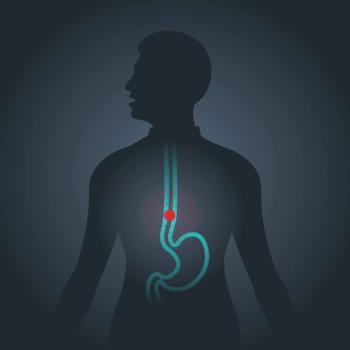
Chemotherapy Toxicity Differs by Sex in Esophageal Cancer
A large pooled analysis of individuals with advanced esophageal cancer showed men and women have different side effects to chemotherapy.
A large pooled analysis of individuals with advanced esophageal cancer showed men and women have different side effects to chemotherapy. Further exploration of these findings could help inform treatment decisions to include certain medications to mitigate these side effects. The findings were
“This is not an area that is well explored,”
The pooled analysis included patient data from four multicenter, randomized clinical trials evaluating four different chemotherapy regimens for advanced esophageal cancer. The chemotherapy regimens included epirubicin, cisplatin, and 5-fluorouracil; epirubicin, cisplatin, and capecitabine; epirubicin, oxaliplatin, and 5-fluorouracil; and epirubicin, oxaliplatin, and capecitabine. Data were gathered for both men and women on treatment outcomes and prevalence of all-grade and grade 3 or greater toxicity.
A total of 1,654 patients were included in the analysis, of which 1,328 were men (80.3%) and 326 were women (19.7%).
While men and women didn’t experience statistically different rates of all-grade or grade 3 or greater toxicities, they did report differences for specific adverse events. Both all-grade and grade 3 or greater nausea and vomiting were significantly more frequent among women compared to men (all grade: 89.3% women vs 78.3% men; P < .001; grade ≥ 3: 16.7% women vs 9.5% men; P < .001). Women also had significantly higher rates of all-grade diarrhea (53.8% vs 46.9%), stomatitis (49.5% vs 40.7%), and alopecia (81.4% vs 74.3%). Although not statistically significant, women had higher rates of grade 3 or greater neutropenia (45.1% vs 40.4%) and febrile neutropenia (11.8% vs 7.7%). Meanwhile, men had significantly higher rates of all-grade peripheral neuropathy (49.3% vs 42.6%).
“It is interesting that there are certain side effects that are worse for men and others worse for women,” Smaglo said. “There is no obvious reason why this would be, and if it could be confirmed and flushed out more clearly, it could have practice implications.” For example, if it could be determined with certainty that women have more nausea and vomiting, then perhaps oncologists would redesign treatment protocols to include additional anti-emetic medications for patients who are women.
No differences in progression-free survival and overall survival were observed between men and women. The only possible difference was men had a higher overall response rate compared to women (46.6% vs 40.4%), but this lacked statistical significance.
One of the limitations of the study was the majority of the study population was men. Smaglo commented, “I would be interested to know how these results hold up when the split of men [to] women is closer to 50:50.”
Although this study evaluated only esophageal cancer, Smaglo pointed out that this trend may occur for other cancer types that are treated with these chemotherapy regimens. “I think it would be compelling if similar results were seen based on gender when the same treatments were used in different cancer types.”
Newsletter
Stay up to date on recent advances in the multidisciplinary approach to cancer.
















































































